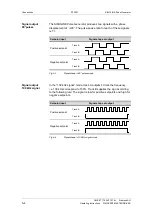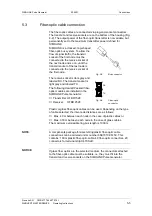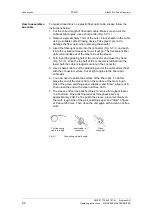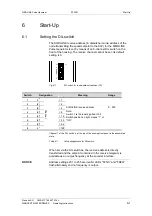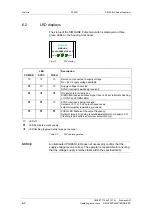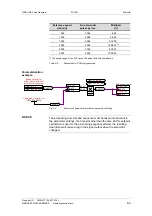
Connections
02.2001
SIMOLINK Pulse Generator
GWE-477 764 4070.76 J
Siemens AG
5-6
Operating Instructions
SIMOVERT MASTERDRIVES
To make connections on a plastic fiber-optic cable, please follow the
instructions below:
1. Cut the correct length of fiber-optic cable. Make sure you cut the
cable at right angles, use a sharp knife. (Fig. 5-7
)
2. Remove approximately 7 mm of the outer, black sheath on the cable
using a suitable cable stripping device. Take great care not to
damage the fiber optic when removing the sheath!
3. Insert the fiber-optic cable into the connector (Fig. 5-7
ó
) and push
it into the cylindrical sleeve as far as it will go. The transparent fiber
optic will protrude out of the other side of the sleeve.
4. Fold round the gripping half of the connector and close it by hand
(Fig. 5-7
ì
). Once the top half of the connector is latched into the
lower half, the cable is lodged securely in the connector.
5. Use a sharp knife to cut the protruding end of the cable almost flush
with the connector surface. Cut at right angles to the fiber-optic
cable axis.
6. You now need to polish the surface of the fiber optic. To do this,
place the end of the sleeve flat on the surface of the matt, rough
side of the green polishing paper supplied, and "draw" a figure of 8.
Then clean the end with a clean, lint-free cloth.
7. The sleeve end can be polished finely to reduce throughput losses
to a minimum. Fine polishing reduces throughput losses by
approximately 2 dB. To fine polish the sleeve, place it vertically on
the matt, rough side of the pink polishing paper and "draw" a figure
of 8 about 25 times. Then clean the end again with a clean, lint-free
cloth.
Cut fiber-optic
cable to length
Insert cable in
connector
Close
connector
ì
ó
Fig. 5-7
Connecting a plastic cable
How to assemble a
bus cable













